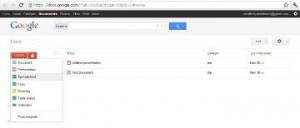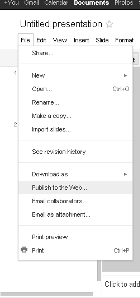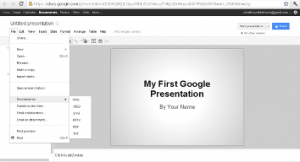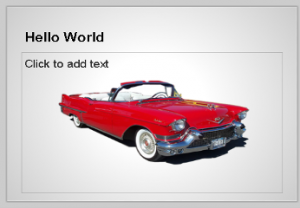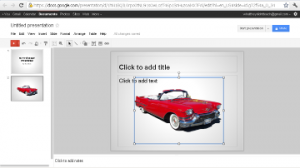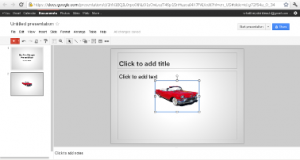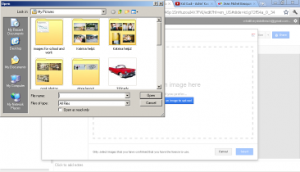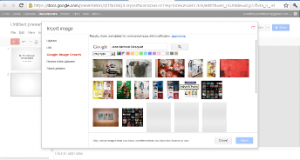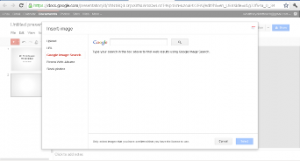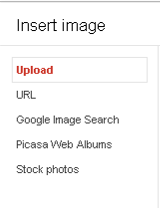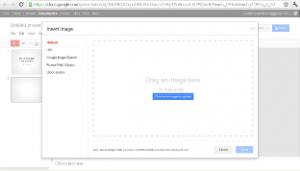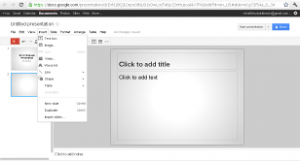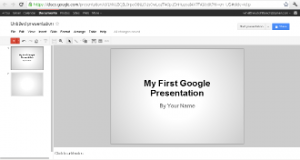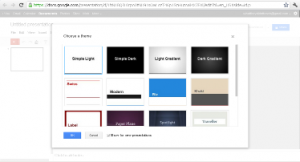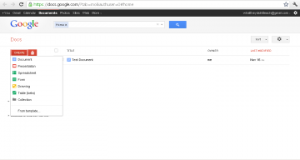Google presentation is very easy to use. It has everything you need to create a basic presentation and/or slideshow. And best of all you can export the presentation Straight to MS PowerPoint (.ppt file) if you want. You can also embed your presentation inside of your web page blog or give someone a link so that they can view it within their web browser with no special software. I’m going to cover the very basics to get you started. I advise you to play around with the software for a while. I will guarantee you will like it. So let’s get started.
The first thing you want to do is go to your Gmail account and click the documents link at the top. That should take you to your documents if you have any. Now click the red “Create” button and you should see a drop down menu.
(Screenshot of the “CREATE” drop down menu.)
Now navigate your mouse to the “Presentation” icon and click it. Once you have clicked the Presentation icon, you should see the black presentation pop up then the “Choose a theme” window should appear. Choose the “Light Gradient” template and wait for it to load. Then click the red plus sign to add another slide to the presentation.
(Screen shot of the “Choose a theme” window.)
(Click the Red plus sign to add another slide.)
Now click the first slide labeled slide one and change the Default text in the boxes, It should look like the figure below.
(Screenshot my first slide after I changed the text.)
Now we’re going to add an image to the next slide. This works exactly the same way it does for Google Docs (the one that looks like MS Word).
(Screenshot of me clicking the “Insert” tab and selecting image.)
You should now see the “Insert image” window pop up. This allows you to insert images you might have on your computer like any other piece of software. Google presentation has the advantage of have Google’s search technology embed in the software.
(Screenshot of the “Insert image” window.)
(Screen shot of the “Insert Image” tabs.)
Now select “Google Image Search” and wait for the Google search tool box to appear.
(Screenshot of the “Inset image window with the Google search tool bar.)
Google (search) for a photo of “Jean Michel Basquiat”. He was one of the most prolific artists of the twentieth century and has thousands of examples and portraits on Google. As you can see all types of images pop up. You can select one but I’m going to go back to the upload tabs and select something that’s on my computer that’s royalty free (no license on its use).
(Screenshot of image search for “Jean Michel Basquiat”.)
(Screenshot of me selecting the “Upload” tab and clicking “Choose an image to upload”)
(Screenshot of choosing an image to insert.)
(Screenshot of an image after it’s inserted.)
Now select the image and grab one of the corners and expand it.
(Screenshot of me selecting an image and dragging the edges out.)
(Screenshot of me changing the text to “Hello World”.)
Now we are going to try to export the image and share it.
(Screenshot of the sharing feature.)
(Screenshot of the different export formats.)
The “Download” as feature is very important. It allows you to export your slides so they can be used in other software. So let’s say I want only one slide to be exported to be used as a graphic on a shirt or I want to import it into a video presentation. All I would have to do is select download as PNG or JPG.
PNG and JPG file types are the most commonly used images on the web. I prefer to use PNG files because they are a higher quality image and my video editing software imports them with no problems. Most of the images in this book are PNG files. I’m a firm believer in “garbage in, garbage out” which translates to, if you start with garbage you end with garbage.
If you want to export your file to be used in MS PowerPoint or Apple Keynote software, you’re going to want to export it as a PPT. This is the most commonly used format for slide show presentations.
The “Publish to Web” feature allows you to export your presentation to the web so that anybody with a web browser can view your presentation. This means that you can embed it into any website. One other cool feature is that you can edit the embed code with to fit on your mobile devices like Google Android phones, iPhones and iPads.
(Screenshot of the Publish to the Web.)
(Screenshot of the Publish to the web window.)
Make sure you spend time playing around with this. It’s completely worth it if you teach, write or lecture anything. It will allow your clients and follower to use your website as a resource for the information you provided in the past. It’s great for giving a sample of what you’re going to present or if you simply just want to give away the whole presentation, that’s fine too.
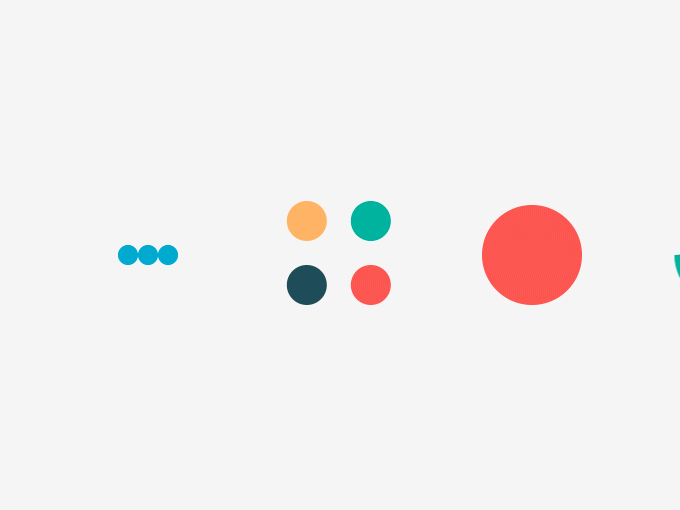

 Rashad Glover
Rashad Glover